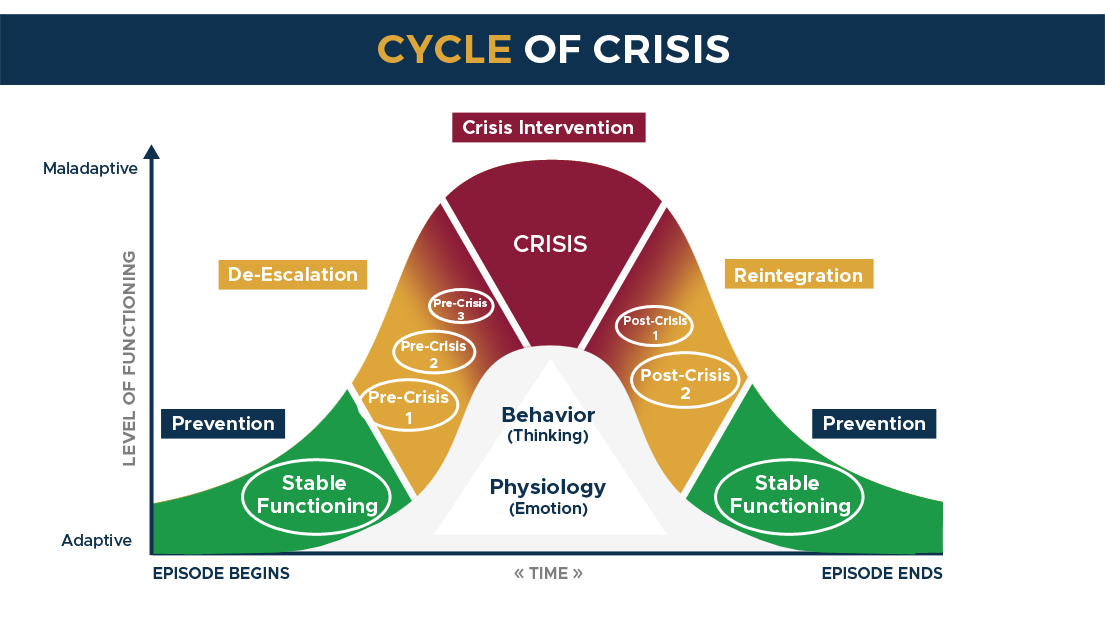To what email should we send bonus material?
Preventing Crisis by using Positive Relationships
(note in case your email blocks atttachments, you can see the video and pdf content on the next page)

No administrator or manager wants to have their staff face an individual in crisis. Nor do they want the individual, be that a student or a patient, to go into a crisis. It is disruptive in more than one way, and often dangerous for both staff and the individual.
Of course, there are crisis management techniques to deal with a crisis, but avoiding, if not outright preventing a crisis from happening in the first place is the most touted feature for any professional crisis management system.
And yet, that is where most crisis management systems differ dramatically in their approach.

This is the ‘cycle of crisis’, it shows how an individual will move from calm and on-task (stable functioning), all the way up to a crisis, and then returning to stable functioning.

Is diffusing a bomb mere seconds before it explodes true prevention of a bomb explosion?
True prevention happens before any problem behavior occurs. Other crisis management systems try to ‘prevent’ crisis by barely avoiding crisis at the last second. This tactic, while seemingly effective, is in reality merely de-escalation.
They intervene when problem behavior is observed, but true prevention happens before any problem behavior occurs.
Unlike other crisis management systems that have a single approach in the ‘de-escalation’ zone (and call that ‘crisis-prevention’), the behavioral science-based method of the Professional Crisis Management Association identifies and trains its practitioners in recognizing four distinctively different levels of pre-crisis behavior, each with a separate set of strategies to use.
In fact, within these levels, PCM (Professional Crisis Management) will even be adjusted to the population you work with. This should be obvious, but the strategies available for de-escalation and prevention will be different when you deal with a population with good communication skills versus one that might have limited communication skills. There are of course other population factors, but they go beyond the scope of a single page article like this.

Based on observed behavior, switch to a different set of strategies

Do frequency and severity of crisis go down?
The actual way the PCM-Association trains future instructors and users in Professional Crisis Management, (with its' main focus being Crisis-Prevention) is also different from other crisis management providers. It is ultimately not about providing a crisis prevention training; it is about the results. Did staff behaviors change? Did frequency and severity of crisis go down?
If you want to know more of the WHAT and HOW of the Crisis-Prevention approach by the PCM-Association, we would love to explain more to you. After all, it is our mission to create safe environments where all parties are treated with dignity and respect using an approach based on behavioral science!
Here is an example of our 'hands off' strategies (we also have effective, safe, humane and dignified 'hands on' strategies) in this particular example we focus on the use of Positive Relationships in a school setting.